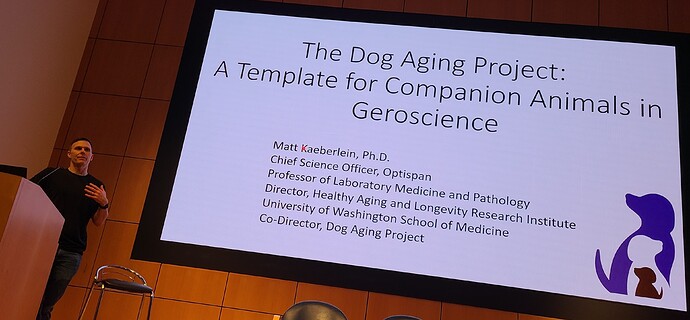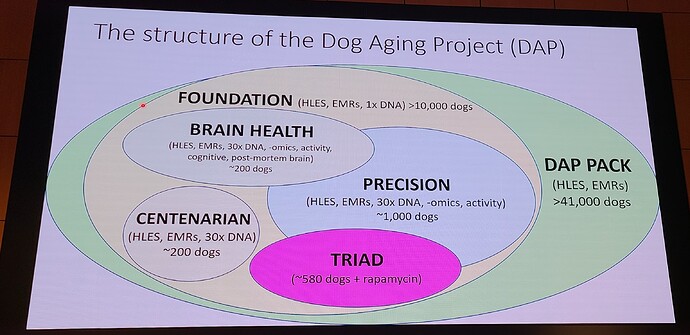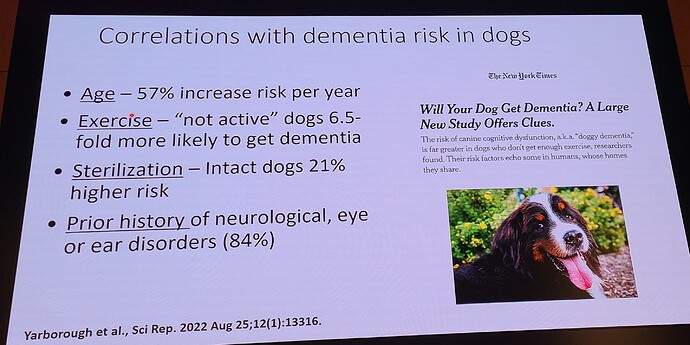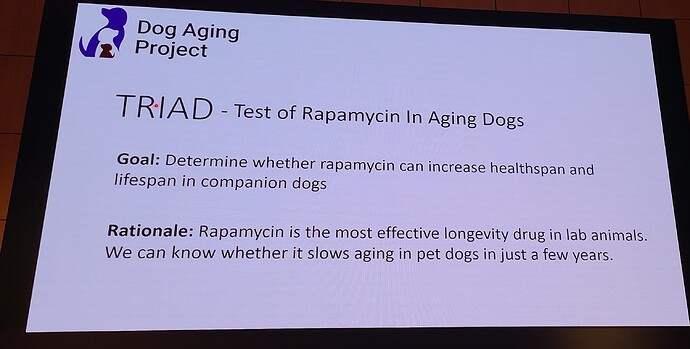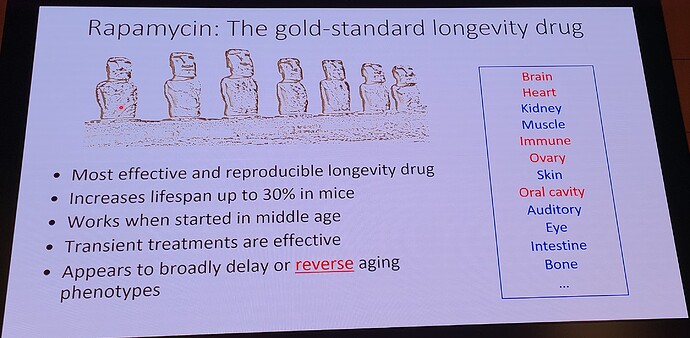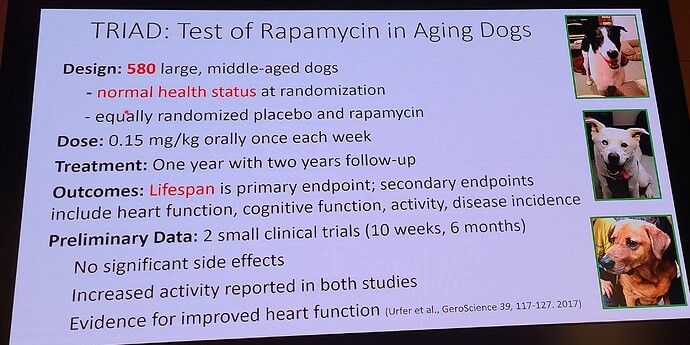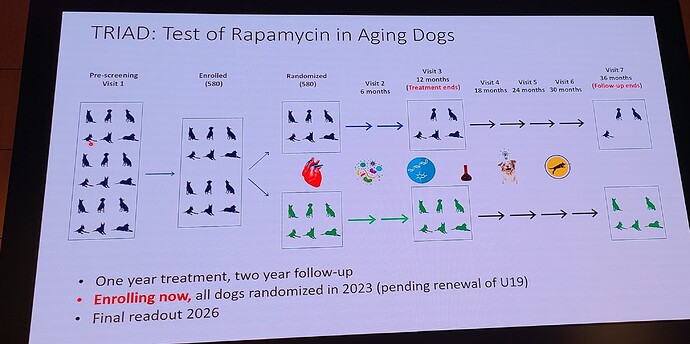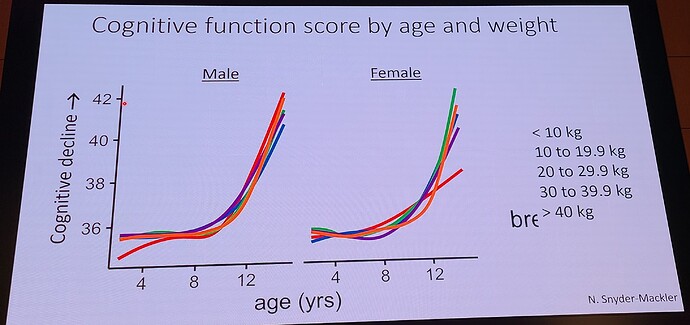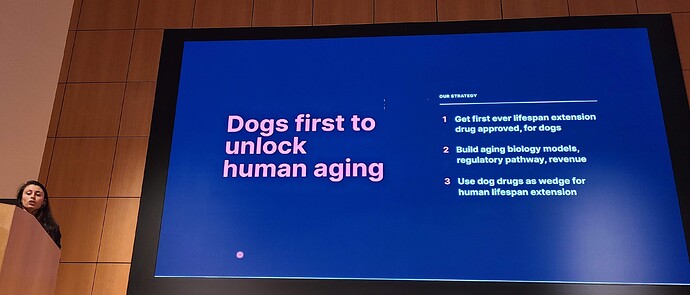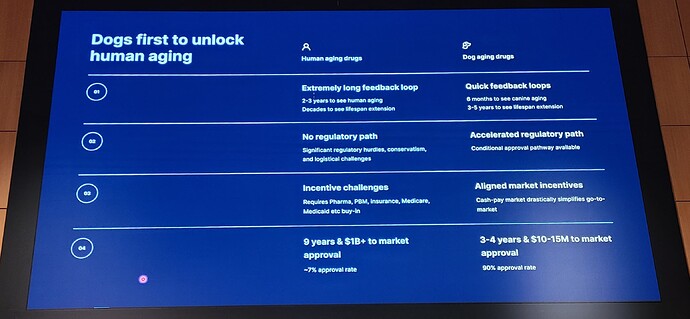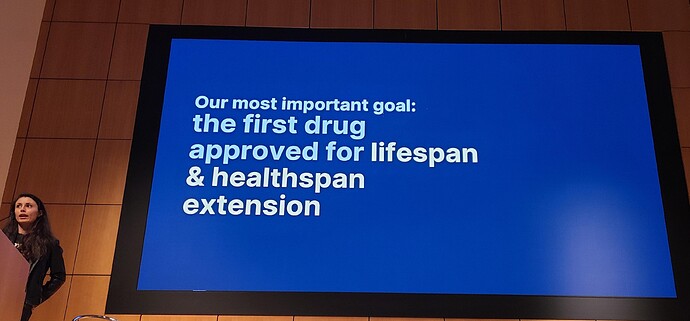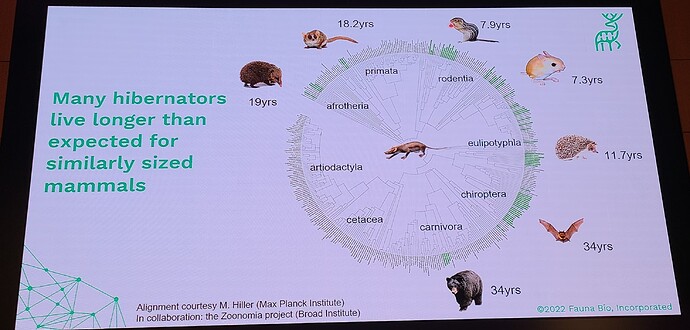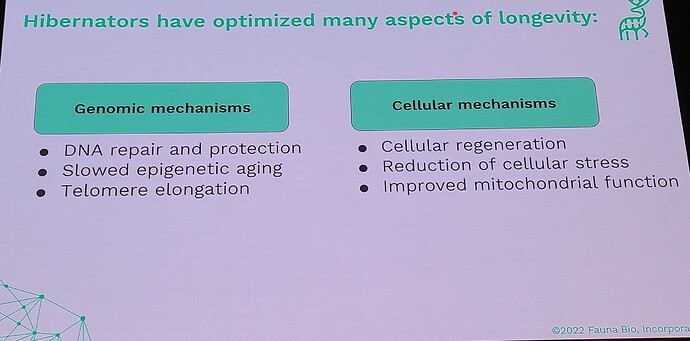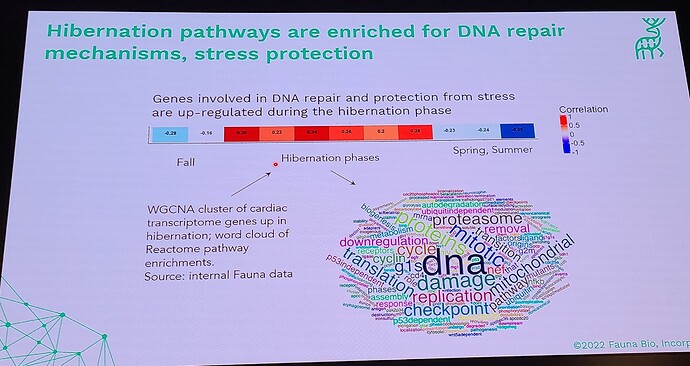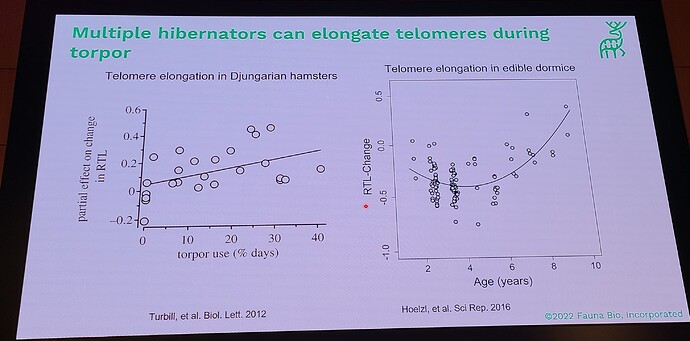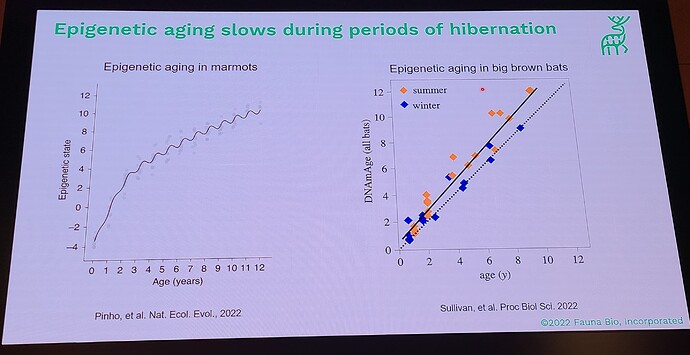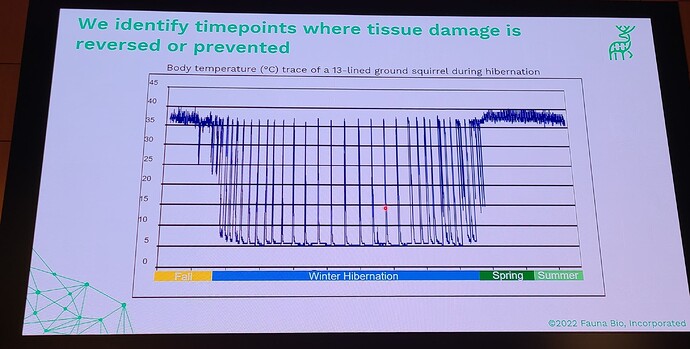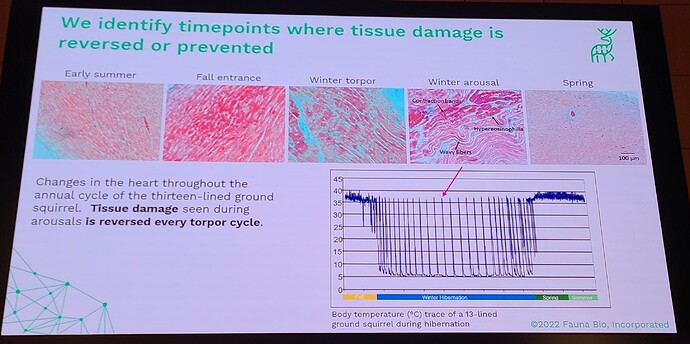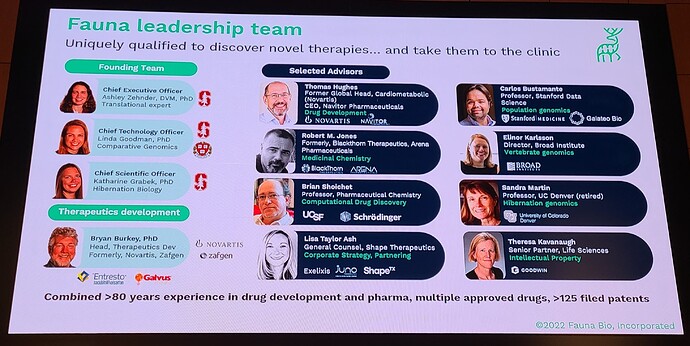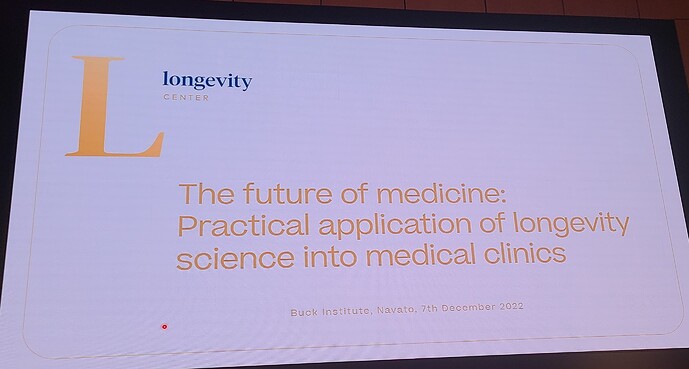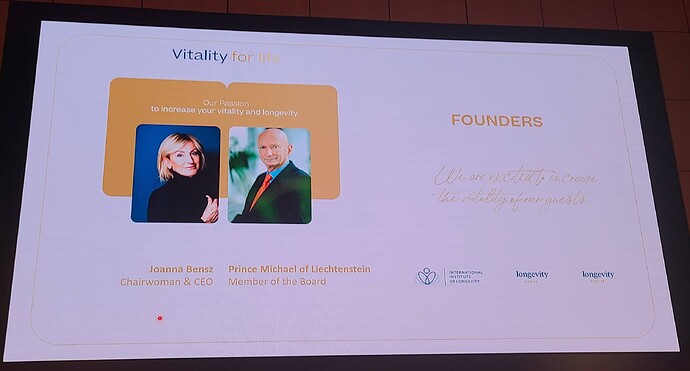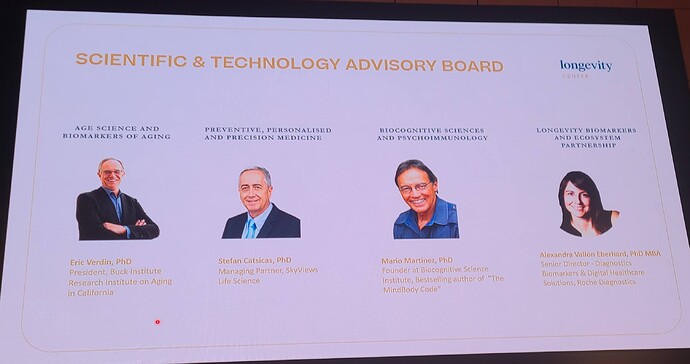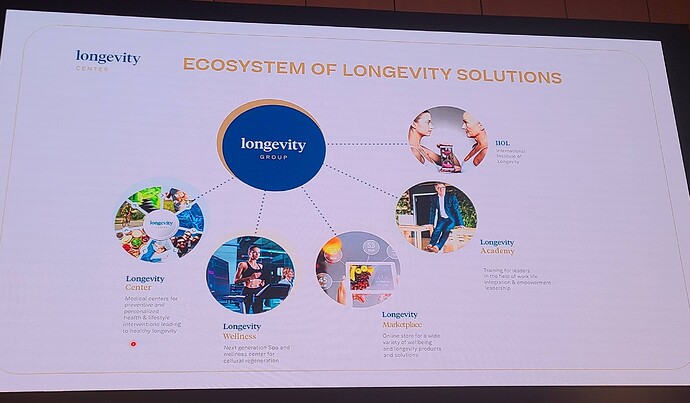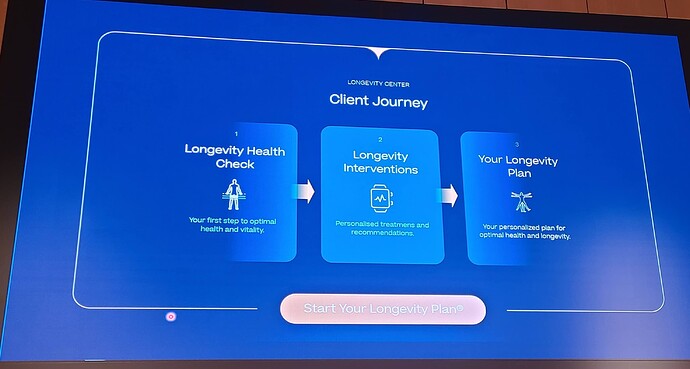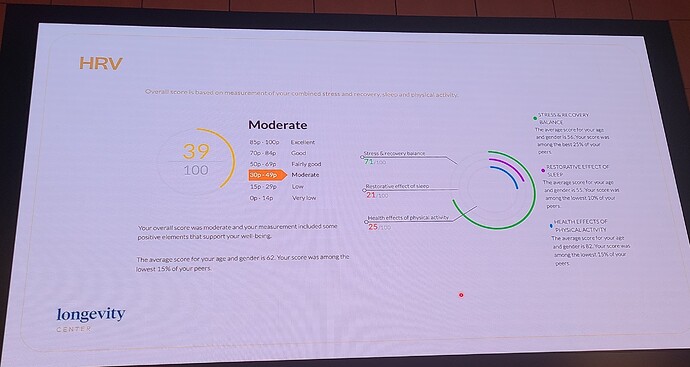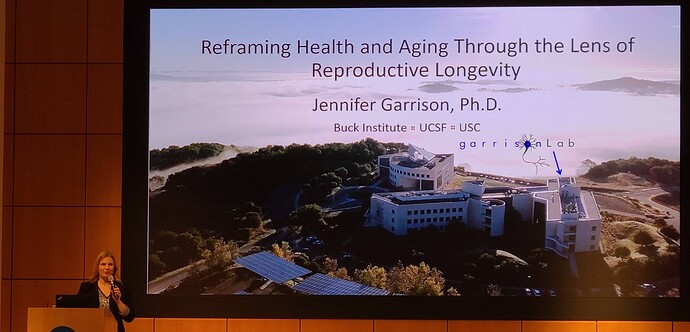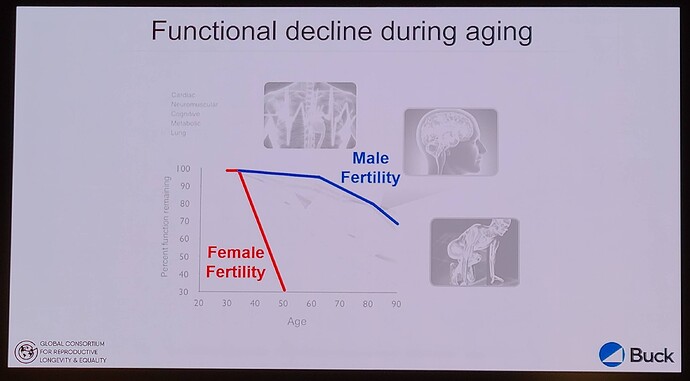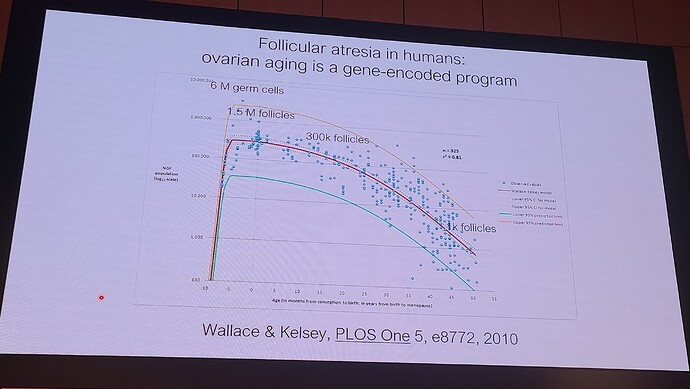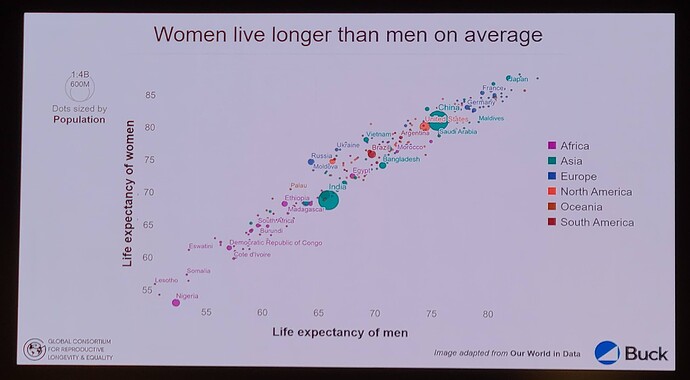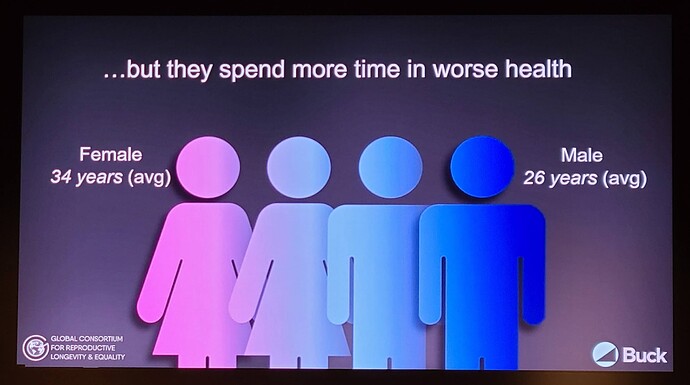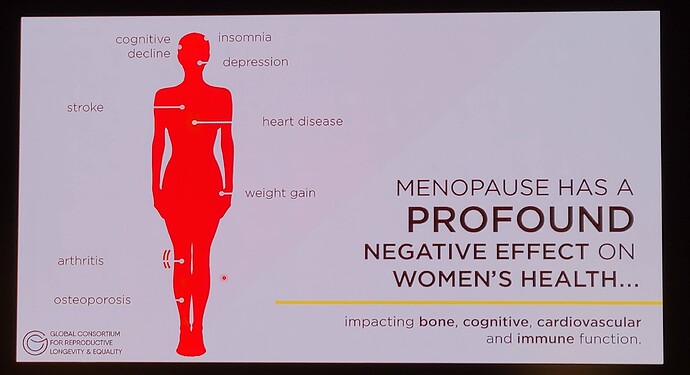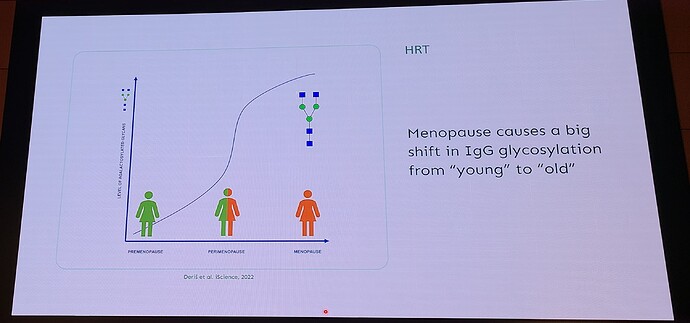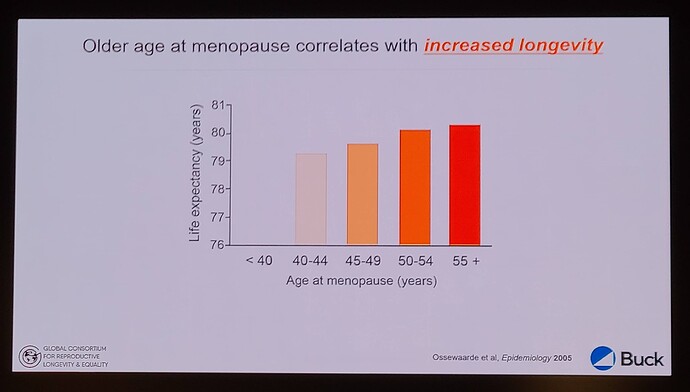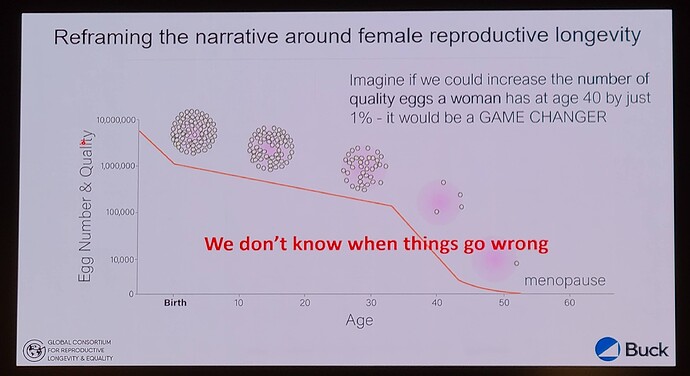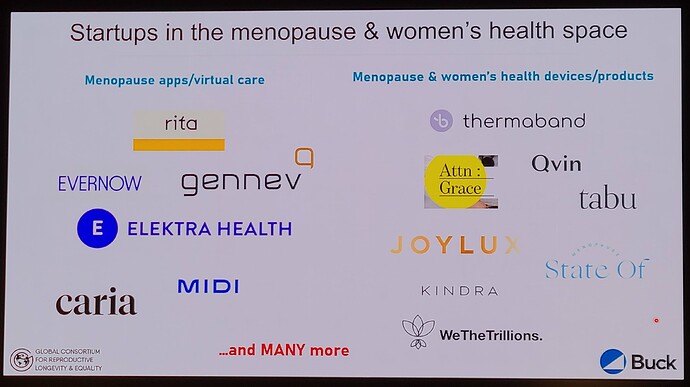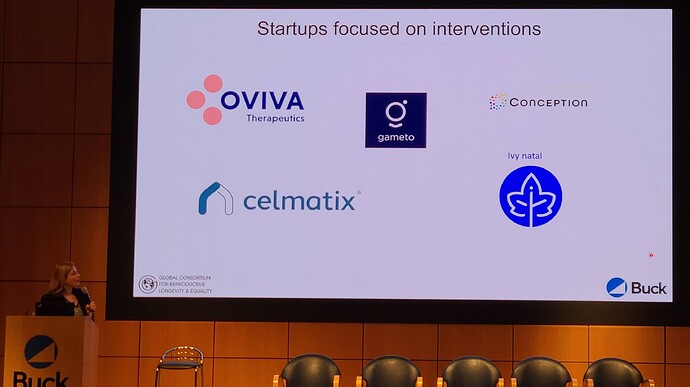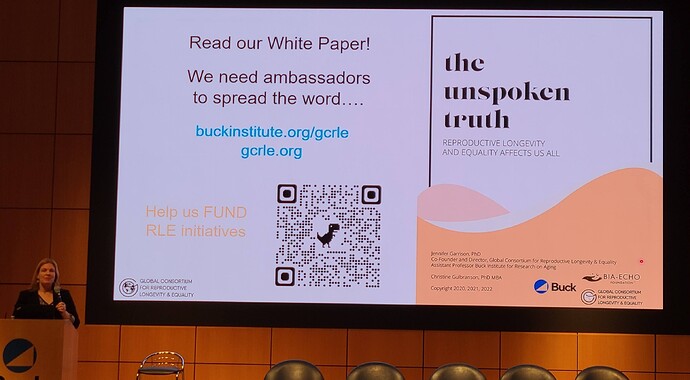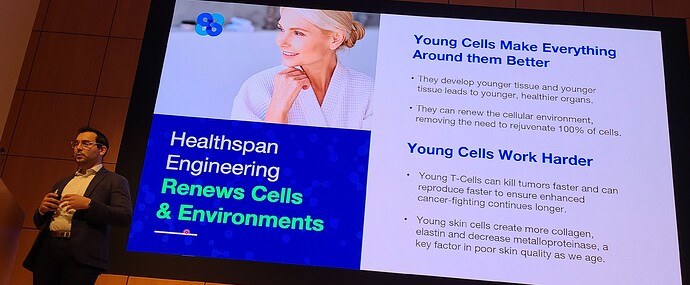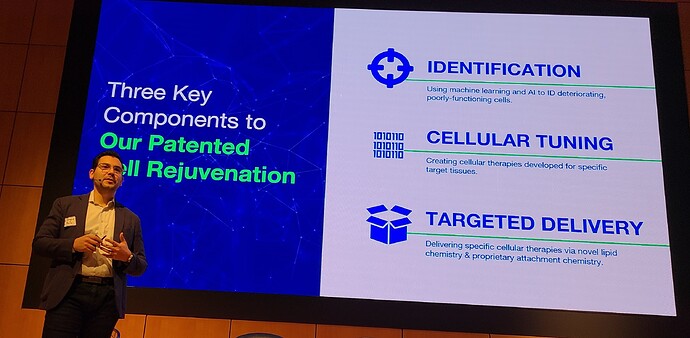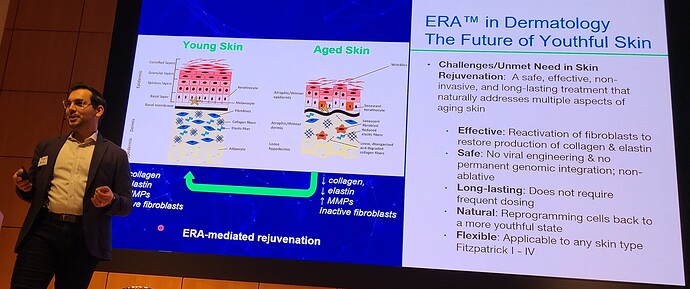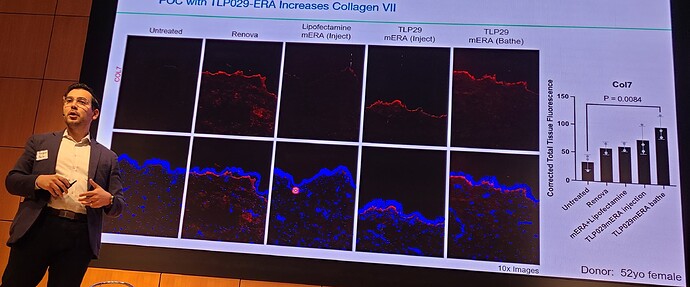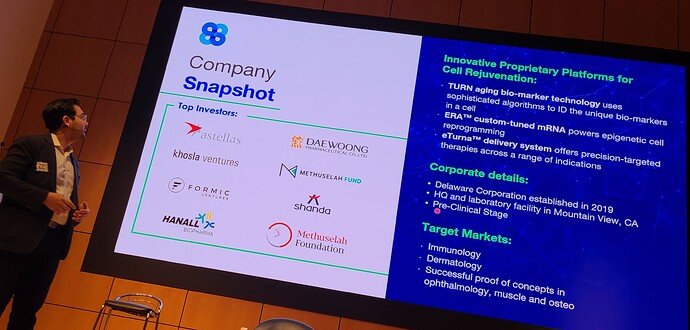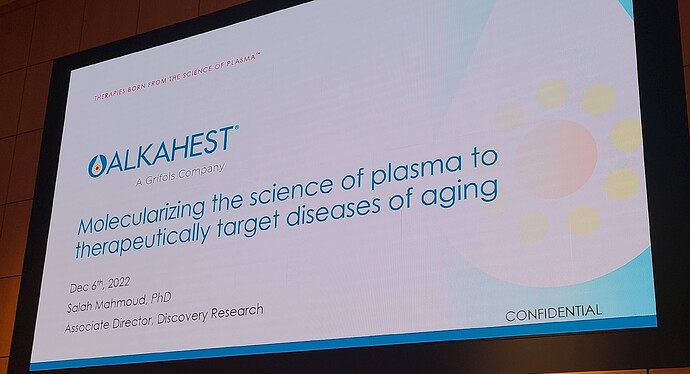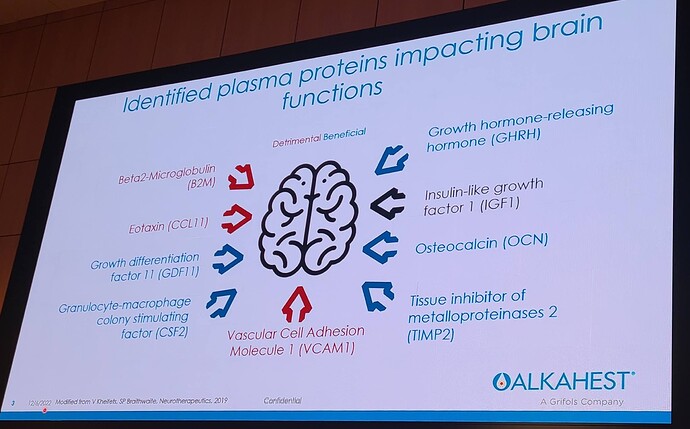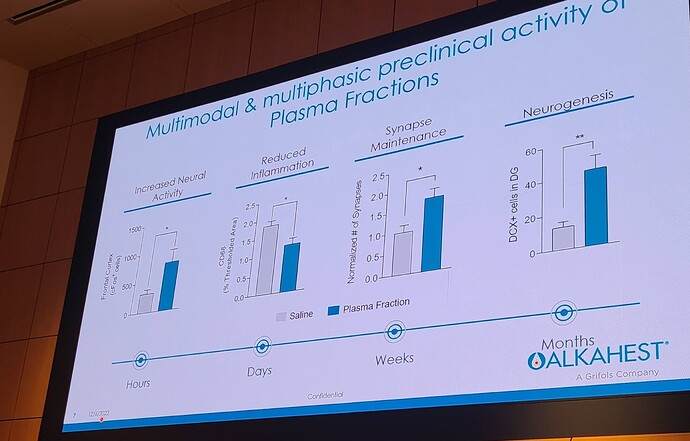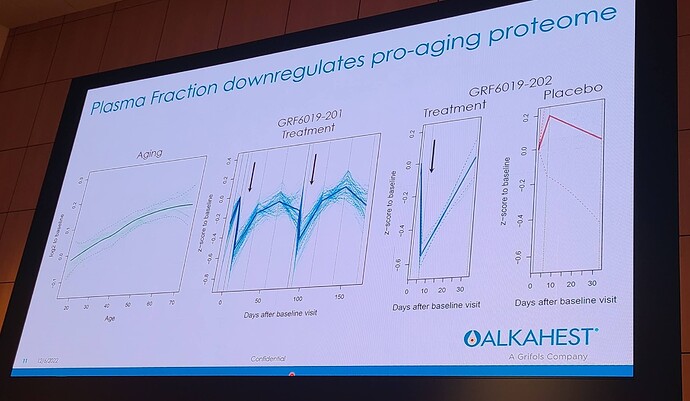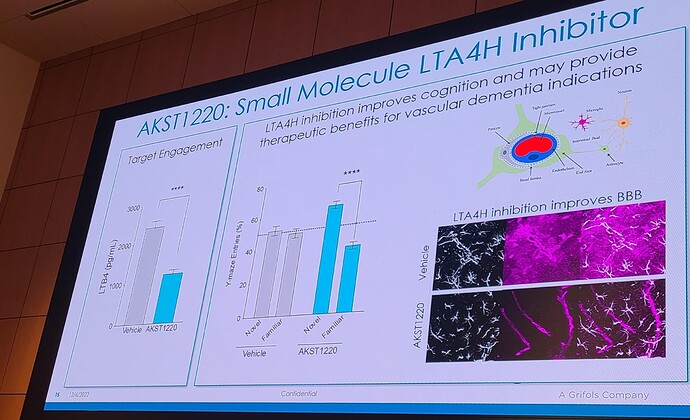I think you have hit upon the best explanation of one of these blood based epigenetic clocks. They measure the average state of an individual at a given point in time.
Much more coming… will take a few days to pull together all my notes. Some really interesting developments.
Yes, very much appreciated!
AFAIK a lot of the clocks measure the average state through the WBCs which only really gives the average state of that subset of WBCs.
Thankfully, the next day of the Longevity Summit was welcomed with a beautiful sunny day.
The rest of these posts here will be in no specific order, just roughly what I think is most relevant to this website, and that people would be most interested in.
The Dog Aging Project
Matt provided an update on the Dog Aging Project and was pushing the concept of companion animals (pets) as a good way to move the field of longevity medicine forward. Not a lot of new information here, but I found it interesting in a number of areas as I describe below.
The rapamycin part of the trial is still recruiting. With luck they’ll be completed sometime during 2023. The rapamycin dosing takes place for 1 year in this trial, and then there is a 2 year followup. So we should see some results in 2026 from the rapamycin part of this trial (i.e. TRIAD).
Some key take-aways from the information they’ve gathered so far from the larger population of dogs in the dog aging project (not the TRIAD portion).
- Inactive dogs are 6.5 Times more likely to get dementia
- Neurological, Eye and Ear Disorders significantly raise dementia risk (84%)
Related Reading: Scientific Results: Associations between physical activity and cognitive dysfunction in older companion dogs - Dog Aging Project
And below a sample of some of the slides from the presentation:
One of the interesting things I learned about was the CSLB (Cognitive Social and Learned Behavior) score used to diagnose dementia in dogs, 15 question survey. Its a Binary Tool. Scoring algorithm - score above 50, its diagnostic for dog dementia, yes/no. In this test, the higher score, worse cognitive function. (Note, I couldn’t find a copy of the CSLB form/scoring info on the web. If someone can, please post it to this thread so dog owners here can use it).
Counter to what was expected, cognitive function in old age was not a function tied directly to body weight/size (larger dogs typically age faster than small dogs, so that would predict worse cognitive functioning for larger dogs).
Initial results they have is that once a day feeding seems to be associated with significantly better cognitive function for older dogs (i.e. less risk of dementia). This could be an argument for intermittent fasting or time restricted feeding on a daily basis.
Related Reading:
DogAgingProjectCogFunction_bray.pdf (658.8 KB)
Loyal for Dogs
Celine Halioua did a fairly basic / high-level presentation on her company “Loyal”. No new data was presented.
She is taking a very “consumer friendly” approach in marketing her company. Generally this seems like a good approach that, if the drug is effective, will help tie the benefits of longer lifespans for people’s pets, to the broader cause of improving lifespans and healthspans.
Some people might argue about whether life extension is a good idea for people and society in general, but it doesn’t seem like extending the lifespan of dogs is at all controversial. This would be a great benefit for the longevity community as a whole, so I do hope she’s successful.
Loyal has raised something in the neighborhood of $50 Million so far, and investors I’ve spoken to are bullish on its prospects going forward, so I’m sure we’ll see more investment rounds if the clinical / vet trials of their drugs are successful.
Coming out with a longevity drug for dogs is quite different than doing this for people, because unlike with people, you can actually do a longevity study with dogs (giving middle-aged, large dogs the drug and then watching them for a few years and gathering data on disease incidence in the dosed group, vs the control group). This means that the first FDA-authorized longevity drug will likely be for animals… in fact long before any drug will be FDA approved for humans for increased longevity. All the other longevity biotech companies that are only targeting human applications must first choose a disease indication to first demonstrate effectiveness, and only much later (after repeatedly showing that it reduces incidence of age-related diseases) would the FDA ever consider letting it claim that it slows aging (increases longevity). All of which means that we will likely see numerous FDA approved longevity drugs over the coming decade, and people will likely have a decade or two to get used to the idea of longevity drugs (being used in dogs), before they will see any drugs that claim longevity for humans.
Loy001 - first drug, targeted at the shorter lifespan of large dogs. This suggested to me that their first drug targeted the IGF-1 pathway, and she confirmed this when I spoke to her later in the day.
She said they use the “statins” metaphor a lot in their discussion of their drug. Preventative medicine is always better for the patient. Like statins, their drug will (it is hoped) reduce risk of future disease.
Celine says that they are very focused on this being a low side effect, low risk drug for the dogs.
First drug targeted to be released in 2024, to be sold through veterinarians from the sounds of it. At some point later they hope to take their drugs to human clinical trials, and FDA approval for people.
I’ve not dug deep into the research literature on IGF-1, but perhaps someone who has can comment on this question: Will a drug that inhibits IGF-1 only increase the lives of large dogs? Or, would it also work (but just to a lesser extent) in small and medium sized dogs? I’m assuming this would be the case, but it would also likely be a case of diminishing returns; the small dogs wouldn’t benefit much from having an even lower IGF-1 level?
I have to believe that many people (perhaps many people here) will be interested in trying this drug sooner rather than later. I told Celine that I expect lots of people will be getting prescriptions for their new anti-aging drug for their dogs, but then taking it themselves. She said she thinks that maybe the FDA is also expecting that… the FDA is asking her for human data on their drug even though they are only asking for dog FDA approval at this time.
Unlike most of the other longevity pharma companies like BioAge, etc Celine Halioua has been very quiet about the exact drug / molecule that they are using as their drug, and has not identified whether they in-licensed it from another company or not. I find this a little unusual, because I assume any patent applications would have been filed long ago.
There has been some research on longevity and lower IGF-1 levels in animals and humans: Lower Insulin-like Growth Factor-1 and Live Longer? | Natural Medicine Journal
And there are a number of drugs that seem to inhibit, or lower IGF-1 already on the market (used to treat people which excessively high IGF-1 levels, diagnosed as Acromegaly) , and I wonder if Loyal is just repurposing one of these drugs. Does anyone have thoughts on this?
MayoClinic suggests:
- Drugs that reduce growth hormone production (somatostatin analogues). In the body, a brain hormone called somatostatin works against (inhibits) GH production. The drugs octreotide (Sandostatin) and lanreotide (Somatuline Depot) are man-made (synthetic) versions of somatostatin. Taking one of these drugs signals the pituitary gland to produce less GH, and may even reduce the size of a pituitary tumor. Typically, these drugs are injected into the muscles of your buttocks (gluteal muscles) once a month by a health care professional.
- Drugs to lower hormone levels (dopamine agonists). The oral medications cabergoline and bromocriptine (Parlodel) may help lower levels of GH and IGF-1 in some people. These drugs may also help decrease tumor size. To treat acromegaly, these medications usually need to be taken at high doses, which can increase the risk of side effects. Common side effects of these drugs include nausea, vomiting, stuffy nose, tiredness, dizziness, sleep problems and mood changes.
- Drug to block the action of GH (growth hormone antagonist). The medication pegvisomant (Somavert) blocks the effect of GH on the body’s tissues. Pegvisomant may be particularly helpful for people who haven’t had good success with other treatments. Given as a daily injection, this medication can help lower IGF-1 levels and relieve symptoms, but it doesn’t lower GH levels or reduce tumor size.
Related: https://www.ncbi.nlm.nih.gov/pmc/articles/PMC6721736/
More information on Loyal is here:
Fauna Bio
Probably the coolest (no pun intended) company to present is Fauna Bio. This is a company started by a group of women (and led by Ashley Zehnder) who are veterinary researchers who are looking to learn from the physiological adaptations that other mammals have made (think hibernating squirrels that can slow their metabolism by 90%, and body temperature by 90%, and then come fully alive again after several months and repair all the harm that has been caused during that hibernation period).
What the company is learning by deeply studying the 13-lined ground squirrel is truly amazing.
And of course, this all ties into Longevity: there is typically a 30% to 50% lifespan improvement over same sized species - for hibernating mammals.
In the short-to-moderate term the company is focused on cardiac and pulmonary diseases. During hibernation, for example, the squirrel lowers their body temperature from its normal 35 degrees C, to about 5 degrees C, and dramatically lowers the flow of blood, and heart beats are a fraction of normal. And most parts of the animal’s brain is shut down / inactive.
And then periodically, (ever week or two) the animal (like a computer in “sleep mode” briefly awakens with a 240 fold increase in metabolism over a few hours, bring its body temperature back up to 35 degrees, heart beat back up to normal, blood flow back up to normal levels, and full brain activity resuming, and then a short time later the sleep button is pushed again and it returns to hibernation.
Dr. Zahnder compared the sudden rush of blood that takes place in these animals to the reperfusion that happens in heart attack patients when blood flow is restored. Typically in humans this is an extremely damaging event that can result in death if not extreme damage. But these squirrels do this dozens of times each hibernation period with few negative long term side effects. The research that Fauna Bio has done suggests that these squirrels do suffer significant damage, but they are also able to repair the damage. Dr. Zahnder says that humans have the similar genes and pathways in our bodies and that we just need to figure out a way to turn them on.
More information:
Robust Mouse Rejuvenation
While Aubrey De Grey was not at the Longevity Summit, several people from his organization where there in attendance. Aubrey De Grey has a new organization called “Longevity Excape Velocity Foundation”, which (as usual with Aubrey) is doing interesting things.
Aubrey has developed a concept he calls robust mouse rejuvenation (RMR), which is when a middle-aged mouse, with a year left to live, has its life expectancy doubled (at least thats the hope). This is the flagship research program for the LEV Foundation.
The project Is starting in February of 2023. It is a 10 arm study of combinations of 4 different leading life extension approaches:
- rapamycin
- senolytics
- stem cells
- telomerase
The study will include a total of 1,000 mice, pre-aged (18 months). Starting with pre-aged mice doing each longevity therapy individually and in combination. It should be very interesting to see the results over the coming years.
Aubrey had first proposed the RMR project back when he was at SENS:
The Longevity Center
The First Rapamycin-prescribing Clinic in Europe
The Longevity Center is a high-end (i.e. expensive) but very science-oriented company started by Joanna Bensz. The group opened their first longevity center in Warsaw, Poland and is now expanding in Germany. They plan to open over 20 clinics around Europe over the next 5 years.
They are a wholistically-oriented organization that is designed around optimizing health and longevity over the long term. Their typical customer is between the age of 30 and 55 years old, but they service customers of any age. They can prescribe rapamycin and metformin, etc. as part of their program (this is the first clinic I’ve heard of in main-land Europe that is prescribing rapamycin and metformin for longevity purposes).
The Longevity Center offers a range of different programs, but the most comprehensive option costs between $1,000 and $2,000 for an initial assessment that takes about 4.5 hours, followed by the development of a 12-month action plan based on the results. Ongoing access to the centre’s doctors and other experts ranges from $200 to $500 per month.
Website: The Longevity Center EU
Video: Interview with Joanna Bensz, founder of Longevity Center
Related Reading:
Presentation (sample of slides)
Reproductive Longevity
Jennifer Garrison, of the Buck Institute, gave her presentation on the importance of reproductive longevity in terms of health and aging. I think the presentation was pretty much her standard one, as we’ve posted videos of before: Women Taking Rapamycin for Enhanced Fertility / Menopause Prevention? - #56 by RapAdmin
The fundamental problem is that ovaries are the fastest aging organ in the human body, starting to degenerate decades before other organs.
Some key points of the presentation:
Related to this, Charles Brenner showed this more detailed slide in his presentation - driving home the point that this isn’t normal aging, it appears genetically programed (so may be genetically deprogrammed):
As a sidenote, its interesting at this point to pull in some new research by GlycanAge (the bioclock company that also presented at the conference but which I’m not going to cover in depth here). GlycanAge has a new study coming out where they measured and saw that aging actually accelerates in women when they go into menopause, so this is, as Jennifer Garrison has stated, a big issue.
See this slide from GlycanAge:
Equally important, in this study of 60 women in the UK (yet to be published), they found that HRT (Hormone Replacement Therapy) actually reversed the biological age of women (as measured by the GlycanAge bioclock, most significantly during the first three months after HR therapy initiation.
This is all fundamentally very unfair and more resources need to be put into this problem (and thankfully they are, and companies are also putting more emphasis on the area).
Companies working on therapies for treating female reproductive health
- Oviva Therapeutics: https://www.ovivatx.com/
- Gameto: https://www.gametogen.com/
- Celmatix: https://www.celmatix.com/
- Ivy Natal: https://www.ivynatal.com/
- Conception Bio: https://conception.bio/
GCRLE-White-Paper_2023FINAL.pdf (644.9 KB)
Turn.Bio
Another interesting Longevity Biotech company that presented at the Longevity Summit was Turn.Bio
Co-Founder Sergio Ruiz was presenting, and what I found most intriguing about the company is that they are a cellular rejuvenation company that is leveraging some biotechnology out of Stanford University to target (initially) dermatological applications. While their technology can be used in many applications, one of their first indications is aging skin.
Following are some of the slides presented:
More information:
Alkahest
There has been a lot of press and videos on blood plasma factors, young blood, and plasmapheresis (or TPE) the past few years. There are numerous companies that have been, and still are in this segment of the market; from Ambrosia (now defunct) to Harold Katcher’s company Yuvan Research, and others like Lyfspn (Dobri Kiprov new company), and others. But the simple truth is that one company seems to be absolutely years ahead of all these others, and that company is the spin-out from the Wyss-Coray lab at Stanford called “Alkahest” (purchased by Grifols, in 2020).
Grifols is the world leader in blood plasma products, so it seems pretty clear that the company has the experience and the scale to really dominate this market as it moves forward in with the clinical trials.
What I found most interesting about this company’s presentation is that they say they are “delivery mechanism agnostic”, meaning that they are focused on providing the blood plasma benefits via traditional blood plasma delivery approaches, but also via small molecule drugs that are designed to trigger / cause the same benefits that a person could get from the plasma product. In an emergency room, where a person may be unconscious an IV delivery of plasma may make more sense, whereas if a person is at home and wants/needs to take a therapeutic regularly, then a small molecule drug / tablet makes more sense.
More information:
Thank you @RapAdmin for sharing! ![]()
If it makes it easier I’d like to share this, something to help automatically crop the slides to the right perspective and dimensions when making a picture:
Thanks very much for all the info.
Is there any chance there will be youtube videos of the presentations, do you know?
No luck on the video, it wasn’t recorded.
From what I’ve read Turn are very close to clinical trials and so far their data seems impressive.
If they actually succeed in reversing skin aging in humans, it will be a game changer. Not only because the cosmetics industry is huge, but because there will be physical proof that aspects of aging can be reversed. Seeing is believing. I have a feeling that it could end up being a watershed moment. They also have immune function in their pipeline, which seems like a much more significant step forwards. Reversing immune aging could dramatically increase health span and potentially increase lifespan. Really exciting times.
This is EXTREMELY EXTREMELY EXTREMELY IMPORTANT. #IMPORTANTQUOTES
RapAdmin, More information on IGF-1 here: https://www.ncbi.nlm.nih.gov/pmc/articles/PMC8844108/
Or, search for “IGF-1, Valter Longo”. Longo may have more to say about IGF-1 than the article above.
Or, if you have time you may find this video interesting: The title is “Eat, Fast, and Live Longer.” Longo talks a little bit about IGF-1 in the video.
Thanks @RapAdmin for sharing your takeaways from the summit. It’s great to get these insights and be in the loop on developments in the space ![]()
Thanks for taking the time to share all of this RapAdmin - much appreciated ![]()



